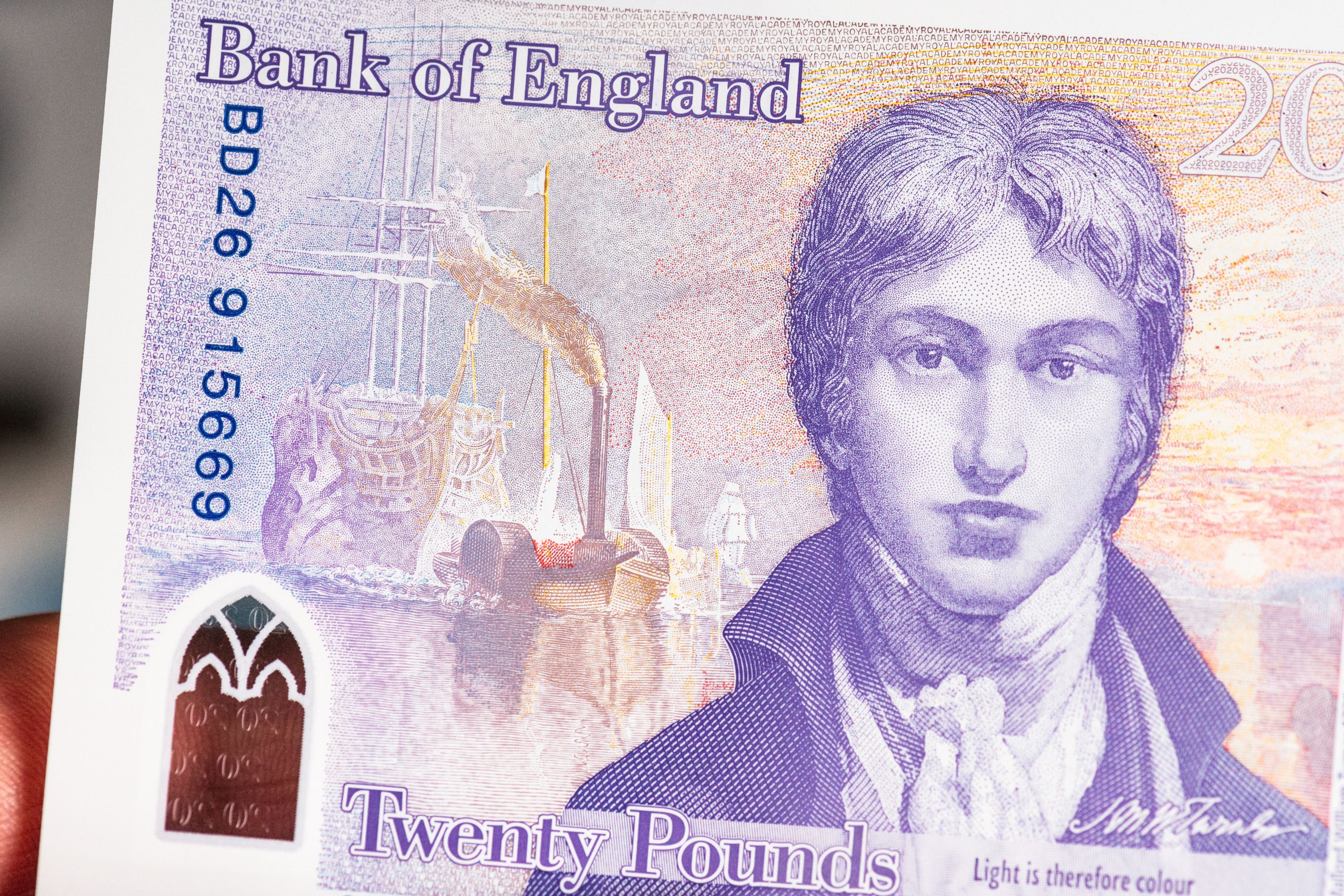When do old £20 notes expire and are they still legal tender? Here's what the Bank of England has said
Find out when the paper £20 notes will no longer be legal tender


Ellie Hutchings
It's important to know when do old £20 notes expire as the Bank of England's withdrawal date falls this year.
It's out with the old and in with the new in 2022, as many ask which bank notes are going out of circulation. Both the old £20 and old £50 note expiry date take place this year - and the expiry date for stamps is coming up too - with The Bank of England withdrawing the paper notes from circulation, following the release of the new £20 and new £50 notes in 2020 and 2021. This means that you'll have to spend them or exchange the notes before the end date, otherwise you won't be able to use them as legal currency.
Our Money Editor, Sarah Handley, says: "The new plastic, polymer £20 note features a new image along with improved security features to prevent fraudulent activity - and already it's been dubbed 'the most secure banknote yet'. Once the old notes are out of circulation, only the new £20 notes can be used to purchase goods, but the Bank of England has issued guidance on how you can exchange any old notes you may still have."
When do old £20 notes expire?
Old paper £20 notes expired on 30 September 2022. This means that cafes, bars, shops and restaurants will no longer accept the paper £20 note. This was the same date that the old £50 note expired.
The Bank of England have to give up to six month's notice to when an old note will cease as tender, though the new £20 note was first issued on 20 February 2020, meaning it was in circulation for over two years before the old one ceased to be legal tender. This enabled an adequate amount of time for the public to spend their old notes before the expiry date.
30 September 2022 will be the last day you can use our paper £20 and £50 notes. After 30 September 2022, these paper notes will no longer be legal tender, so we encourage people to spend or deposit them at their bank ahead of this date.https://t.co/q806ihSaEb pic.twitter.com/aYnrk3eikzJune 24, 2021
Along with the new £50 note, the new £20 note completes the family of polymer notes, with the £10 note first issued in 2017 and the £5 note in 2016.
The Bank of England’s chief cashier, Sarah John, said: "Changing our banknotes from paper to polymer over recent years has been an important development, because it makes them more difficult to counterfeit, and means they are more durable.
Parenting advice, hot topics, best buys and family finance tips delivered straight to your inbox.
"The majority of paper banknotes have now been taken out of circulation, but a significant number remain in the economy, so we’re asking you to check if you have any at home."
Are old £20 notes still legal tender?
No, old £20 notes are no longer legal tender. The old £20 notes ceased to be valid in September 2022, following the expiry date given by the Bank of England. However, you can still exchange the old notes even though the deadline has passed.
The Bank of England have said that many banks will still accept the "withdrawn notes as deposits from customers" and so will the Post Office. You can also exchange the paper notes for the new polymer ones directly at the Bank of England based in London.
You can find out more information on how to exchange your old bank notes on the Bank of England website.
Following the recent switch to polymer notes, the Bank of England has confirmed that the new notes featuring the late Queen Elizabeth II will continue to be legal tender alongside the new King Charles bank notes.
What’s different about the new polymer £20 note?
- A new hologram image that changes between the words ‘Twenty’ and ‘Pounds’.
- A see through window in the bottom corner of the note.
- A portrait of the Queen printed on the window with ‘£20 Bank of England’ printed around the edge.
- Polymer material makes the note waterproof and much harder to rip, as well as ensuring that the printed lines and colours on the note stay sharp without smudges or blurred lines.
- JMW Turner features on the new note. The self-portrait of the Romantic-era artist was painted in 1799 and is on display at Tate Britain in London, replacing the economist Adam Smith who appeared on the original paper £20 note.
- A painting of Turner's is the other image on the note, called The Fighting Temeraire. It’s a tribute to the ship HMS Temeraire which was involved in Admiral Nelson’s victory at the Battle of Trafalgar in the early 19th century.

Some of these new features, such as the hologram and the see through window, have been added for security, making it harder for the note to be copied and forgeries to be made.
JMW Turner was chosen to feature on the note from a long list of 590 British creatives who helped change Britain, which was eventually whittled down until the renowned painter was selected by the Bank of England's Banknote Character Advisory Committee.
Victoria Pomery, former Director of Turner Contemporary, said of the decision: "We are thrilled to feature on the new £20 note which centres on Turner Contemporary’s namesake, JMW Turner ... Placing JMW Turner at the heart of this celebrates the vital role that arts and creativity play in our lives."
Mark Carney, who was the Bank of England Governor from July 2013 to March 2020, chose Tate Britain - which is home to the most important Turner collection - to launch the new £20 note.
He said: "I am delighted that the work of arguably the single most influential British artist of all time will now appear on another 2bn works of art – the new £20 notes that people can start using today," at the launch back in February 2020.
Video of the Week:

Grace Walsh is a health and wellbeing writer, working across the subjects of family, relationships, and LGBT topics, as well as sleep and mental health. A digital journalist with over six years experience as a writer and editor for UK publications, Grace is currently Health Editor for womanandhome.com and has also worked with Cosmopolitan, Red, The i Paper, GoodtoKnow, and more. After graduating from the University of Warwick, she started her career writing about the complexities of sex and relationships, before combining personal hobbies with professional and writing about fitness.
- Ellie HutchingsFamily News Editor